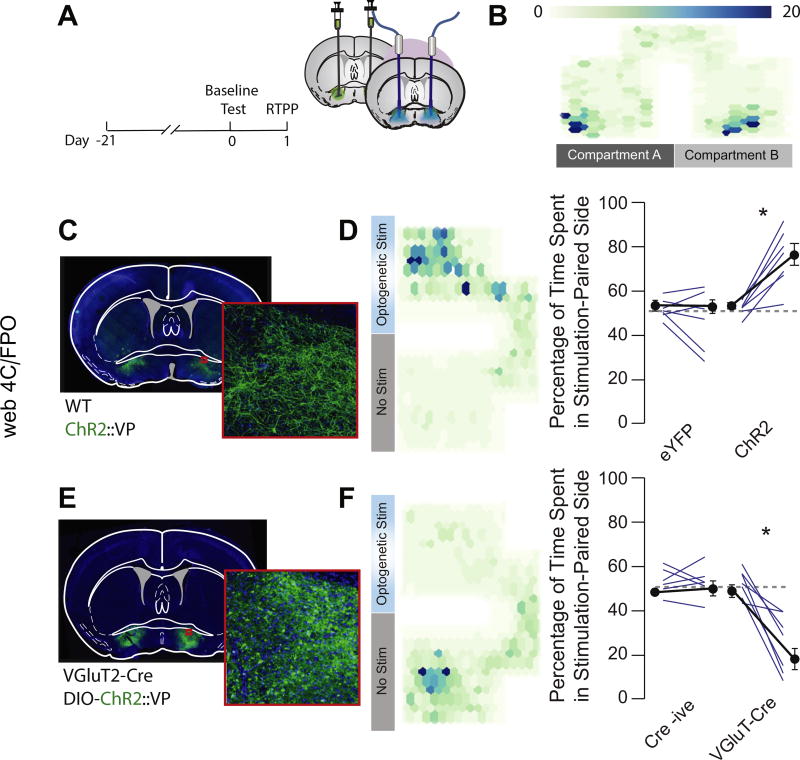Figure 6.
Activation of glutamatergic ventral pallidum (VP) neurons induces real-time place aversion. (A) Experimental schematic. Unfloxed channelrhodopsin-2 (ChR2) was injected into the VP of wild-type (WT) mice, floxed ChR2 was injected into the VP of VGluT2-Cre mice, and optic fibers were implanted over the injection site. A baseline place preference task was conducted 24 hours before the real-time place preference (RTPP) task. (B) Representative heat map showing no baseline preference for either chamber of the test apparatus (scale indicates activity counts of tracked position). (C) Widefield image of infection site of unfloxed ChR2-enhanced yellow fluorescent protein (eYFP) in the VP. (D) Nonspecific optogenetic stimulation (stim) of the VP induced an RTPP (baseline 51.1 ± 1.4%, stim 77.1 ± 4.9%; t6 = 6.17, p < .001), while stimulation with the control fluorophore had no effect (baseline 49.7 ± 1.7%, stim 47.0 ± 5.1%; t6 = 1.036, p = .34). (E) Widefield image showing infection site of floxed ChR2-eYFP in the VP of VGluT2-Cre mice. (F) Selective optogenetic activation of glutamatergic VP neurons induced a real-time place aversion (baseline 49.9 ± 2.8%, stim 23.1 ± 6.03%; t6 = 6.05, p < .001), while Cre-negative littermates showed no response to light stimulation (baseline 53.1 ± 2.5%, stim 52.8 ± 3.1%; t5 = 0.11, p = .914).

